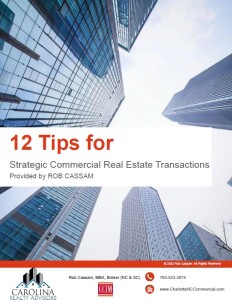This month’s newsletter has just been released! Check out the latest tips for tenants and users of commercial real estate space.
In this issue
- Condos – Developments And Conversions
- Real Estate Options- An Investment Tool
- Percentage Lease And The Seasonal Business
- Changes In Shopping Centers
- Owners And Tenants Must Have Insurance
Most anything that can be subdivided to be sold or rented can be developed or converted to condominiums. When we say “condo” maybe the apartment might come to mind first. Then, you may think of the commercial office building that was converted to condominium offices. Less common are the other, unusual types of condo developments such as condo parking garages, boat marinas, and other properties that are usually rented. Here are examples…..(more)
An option on real estate is an extremely versatile investment tool that comes in a variety of forms that can be used for a variety of purposes. The primary use of the option is that it gives the optionee (the party holding the option) control over property (in the sense of the right to buy it) for very little cash. It gives the most leverage and conserves cash, both very desirable for investors. An option gives the holder the right to buy a specific parcel of real estate at a specified price, on specified terms within a specified period. An option can be compared to (1) a contract of sale with a liquidated damage clause, (2) a sale with a nonrecourse purchase money mortgage, and (3) a lease containing an option to purchase……(more)
The choice of the type of lease for commercial space leased by a retail business is usually a percentage lease, meaning that the rental amount is determined as a percentage of the gross receipts of the business. The investor-landlord, in effect, takes a stake in the success of the tenant’s business and shares its ups and downs. Whether it is a hardware store, a furniture store, an ice cream and confections store, a supermarket, or a variety store, the percentage rental will depend on the turnover of merchandise, the margin of profit, and the cost of operating the business……(more)
Shopping centers have been changing. Increased spending power in the population is supporting new mall construction and the renovation of existing centers.
Now the newer and renovated centers are becoming more mixed use, with hotels and office buildings being incorporated into the plans. Larger malls are providing more than just shopping. We are seeing more cultural attractions, medical clinics, health clubs, spas, and other facilities locating there……(more)
Insurance coverage must be addressed by both landlords and commercial tenants. For the run-of-the-mill daily problems, a landlord must have the maximum coverage for the building and the tenant’s leases. The tenant must cover the business with coverage that will protect his business. What if you have a small disaster that is easily repaired, but you lose a tenant because he was not covered for the damage inside the business?……(more)




